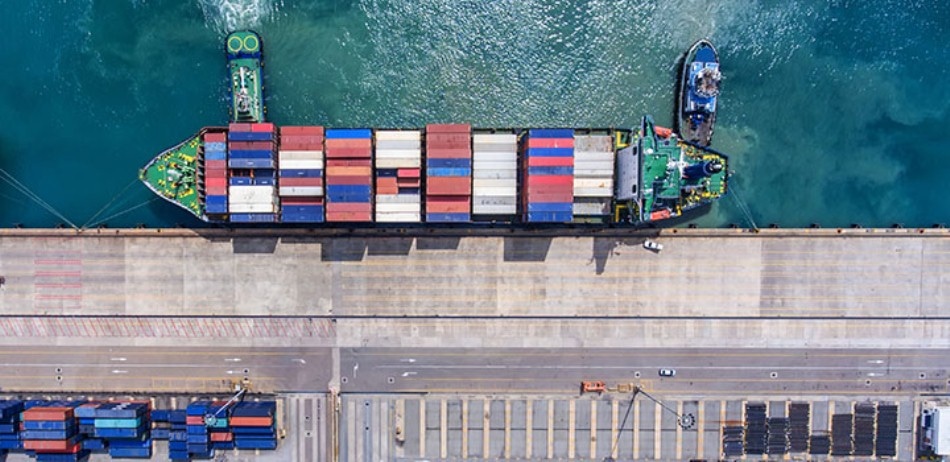May 17 2018
New study exposes the growth of carbon manufacture from Chinese exports has reduced or reversed, reflecting a “new phase of globalization” between developing countries that may result in destabilization of global efforts to cut emissions.
 Image credit: University of East Anglia
Image credit: University of East Anglia
The research, involving scientists from the University of East Anglia (UEA) and colleagues in China and the United States, examined how complex supply chains are spreading energy-intensive industries and their CO2 emissions across the global South. It discovered that trade among developing nations—known as South-South trade - more than doubled from 2004 to 2011.
A few production activities are moving from China and India to other developing countries, such as Vietnam, Indonesia, and Thailand, mainly for raw materials and intermediate goods production in energy-intensive industries.
Consequently, the growth of CO2 emissions embodied in Chinese exports has decelerated or reversed, while the emissions embodied in exports, such as textiles, from less-developed countries like Bangladesh and Vietnam have surged.
International trade grew by more than 50% from 2005 to 2015, with approximately 60% of the increase resulting from rising exports from developing countries. However, over the same period, South-South trade increased even faster - more than tripling - to attain 57% of all developing country exports (US$9.3 trillion) in 2014.
Reporting their findings in Nature Communications, the authors caution this trend may critically weaken global efforts to decrease global emissions that progressively depend upon rallying voluntary contributions of more, smaller, and less-developed countries.
It follows a study published a month ago in Geophysical Research Letters, in which the authors debate that the Chinese export-embodied CO2 emissions have peaked because of the changing structure of Chinese production. They propose more attention should on ensuring countries that may partially replace China as key production bases increase their exports using low-carbon inputs.
Co-author on both studies Dabo Guan, professor in climate change economics at UEA’s School of International Development, said: “The rapid growth in South-South trade reflects a fragmenting of global supply chains whereby early-production stages of many industries have relocated from countries like China and India to lower-wage economies, a trend that has accelerated since the global financial crisis in 2008.
“In addition to their important implications for global economic development, these trends will affect the magnitude and regional distribution of future global CO2 emissions.”
Comparatively, little attention has been given to the fast rise of South-South trade since the 2008-2009 international financial crisis. Yet the period after 2009 has also seen decreases in Chinese coal consumption that underpin a leveling off of international CO2 emissions, as well as the forging of the Paris Agreement whereby countries are defining their contributions to the worldwide effort to lower CO2 emissions.
“The carbon intensity of the next phase of global economic development will determine whether ambitious climate targets such as stabilizing at 2 °C will be met, and our findings depict the nascent rise of energy-intensive and emissions-intensive production activities in other Asian countries such as Vietnam and Pakistan,” said Prof Guan.
“The success of international climate mitigation efforts may, therefore, depend on curtailing growth of coal-based energy and emissions in now-industrializing and urbanizing countries. Otherwise, countries like China and India may meet their nationally determined contribution under the Paris Agreement by hollowing out low-value, energy-intensive manufacturing, and offshoring those activities to emerging markets elsewhere in Asia with less stringent climate policy measures.
“Successfully mitigating climate change therefore urgently depends on decarbonizing not only energy systems in developed countries but also the entire process of industrialization.”
The researchers used the most recently available data on global trade and CO2 emissions from 2004, 2007 and 2011 to monitor emissions linked to intermediate as well as final goods and services from 57 industry sectors that were traded among 129 regions (101 of which are individual countries).
Altogether, CO2 emissions embodied in goods and services exported from developing countries grew by 46% between 2004 and 2011, from 2.2 to 3.3 gigatonnes (Gts). Although a considerable and growing quantity of these emissions were signified in exports to developed regions (1.8 Gt in 2004 and 2.2 Gt in 2011, increasing by an average of 2.9% annually), the emissions embodied in South-South trade increased a lot more quickly: from 0.47 Gt in 2004 to 1.1 Gt in 2011 (1.33% per year). The growth is mostly triggered by the increasing export volume and partially offset by a weakening in emission intensity.
‘The rise of South-South trade and its effect on global CO2 emissions’, Jing Meng, Zhifu Mi, Dabo Guan, Jiashuo Li, Shu Tao, Yuan Li, Kuishuang Feng, Junfeng Liu, Zhu Liu, Xuejun Wang, Qiang Zhang, and Steven J Davis, has been published in Nature Communications in the May 14 issue.